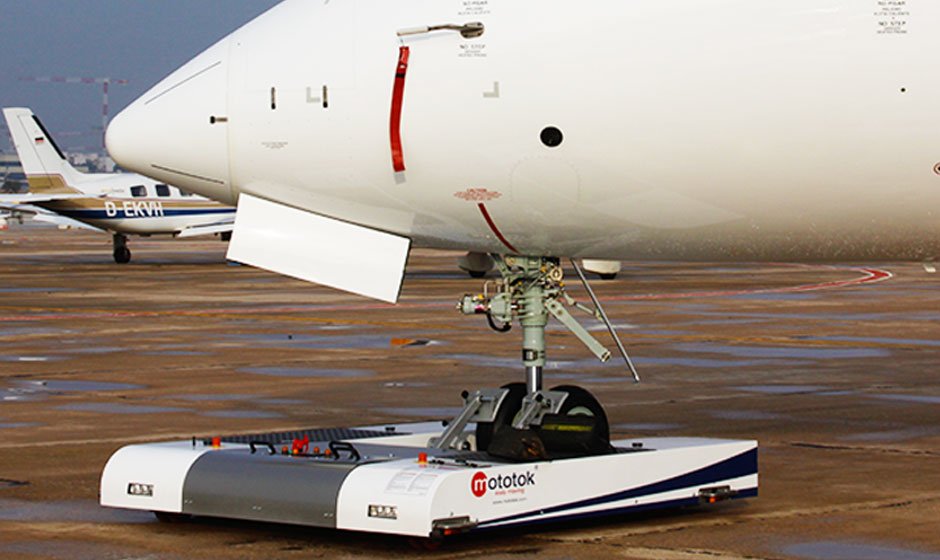What Are Aircraft Tugs?

In the aviation business, airplane tugs are indispensable instruments that are vital to the safe and effective transportation of aircraft on the ground. These strong vehicles are made to push or pull airplanes, making it easier to park, maintain, and board them on the ground. To appreciate aircraft tugs and their position in contemporary aviation, one must have a thorough understanding of their many types, functions, and significance. This article explores the intricacies of airplane tugs, including their kinds, technical developments, safety characteristics, influence on the environment, and function in improving airport efficiency.
Traditional Pulls
Conventional tugs attach to the aircraft’s nose landing gear using a towbar. These tugs are adaptable and strong enough to handle a variety of aircraft sizes. The tug can securely push or pull the aircraft thanks to the towbar’s strong connection. But it might take some time and exact alignment to attach and remove the towbar.
Towbarless Tugs
A more modern invention that does away with the necessity for a towbar is the towbarless tug. These tugs offer a safe and effective connection by immediately lifting the aircraft’s nose wheel via a hydraulic system. Busy airports benefit greatly from the increased mobility and faster connection times that towbarless tugs provide. Additionally, a variety of aircraft sizes, from tiny regional planes to massive commercial airliners, are supported by their design.
Technological Advancements in Aircraft Tugs
Aeroplane tugs are now much more useful and efficient thanks to technological improvements. With today’s sophisticated navigation and control technologies, tugs can move safely and precisely. Real-time positional data is provided by GPS and laser-guided systems, which make it easy for operators to maneuver through complicated airport surroundings. Furthermore, certain tugs, like pushback tugs, now have remote control capabilities, which improves operating safety and flexibility.
Safety Features of Aircraft Tugs
In aviation, safety is of the utmost importance, and aircraft tugs are no different. In order to avoid mishaps and guarantee the safety of both passengers and ground crew, modern tugs are outfitted with a number of safety measures. These characteristics include emergency stop devices, collision avoidance gauges, and anti-slip braking systems. Towbarless tugs’ hydraulic systems are developed to guard against overloading and guarantee a safe connection to the aircraft. Operator training is also essential for upholding safety regulations. To ensure they can react to a variety of situations and possible threats, operators are trained to manage a variety of tugs and aircraft. To keep tugs operating at their best, regular inspections and maintenance are also necessary.
Environmental Impact of Aircraft Tugs
Aircraft tugs have an environmental impact that should be taken into account, particularly in light of the aviation industry’s attempts to lessen its carbon footprint. Air pollution and greenhouse gas emissions are a result of using traditional diesel-powered tugs. On the other hand, the use of electric tugs is lessening these effects. Electric tugs are an eco-friendly choice since they emit no emissions and drastically lessen noise pollution. The transition to electric tugs is also in line with larger sustainability programs in the aviation sector, such as the development of greater energy-efficient aircraft and the use of environmentally friendly aviation fuels.
Enhancing Airport Efficiency with Aircraft Tugs
The use of aircraft tugs is essential for improving airport productivity. Tugs facilitate more efficient ground operations and shorter turnaround times by allowing for the precise and precisely controlled movement of aircraft. Maintaining timetables and reducing delays are crucial for customer happiness and airline revenue, and efficient aircraft movement makes this possible. Utilizing cutting-edge technology, including GPS and remote control systems, allows for speedier and more precise aircraft placement, which further improves productivity. Towbarless tugs also save the amount of time needed to install and remove towbars, expediting ground operations and reducing downtime.
Conclusion
In order to guarantee the safe and effective transfer of aircraft on the ground, airplane tugs are essential equipment. Tugs are essential to contemporary aviation, both in terms of their kinds and technical innovations as well as their safety features and environmental effects. Aircraft tugs support the efficient functioning of airports and the general prosperity of the aviation sector by improving airport efficiency and adhering to sustainability objectives. The future of airplane tugs offers even more advances as technology develops, guaranteeing their continued importance as an essential component of aviation infrastructure.



